- Home
- Amish Tripathi
Scion of Ikshvaku Page 9
Scion of Ikshvaku Read online
Page 9
‘You’re right, Sudas,’ said Vashishta, using Ram’s gurukul name.
‘Can you tell us about this earlier masculine way of life? What was this empire like?’ asked Ram. ‘Could we find answers in it, to our present-day ills?’
‘It was an empire that arose many millennia ago, and conquered practically all of India with stunning swiftness. It had a radically different way of life and, at its peak, it scaled the heights of greatness.’
‘Who were these people?’
‘Their foundations were laid right here, where we are. It was so long ago that most have forgotten the significance of this ashram.’
‘Here?’
‘Yes. It was here that the progenitors of that empire received their education from their great guru. He taught them the essentials of an enlightened masculine way of life. This was his ashram.’
‘Who was this great sage?’ asked Ram in awe.
Vashishta took a deep breath. He knew that the answer would evoke shock. The name of that ancient great rishi was feared today; so much so that it was not even uttered aloud, ever. Keeping his eyes fixed on Ram, he answered, ‘Maharishi Shukracharya.’
Bharat, Lakshman and Shatrughan froze. Shukracharya was the guru of the Asuras, and the Asuras were demonic fanatics who had controlled almost the entire Indian landmass thousands of years ago. They were finally defeated by the Devas, respected today as Gods, in brutal battles fought over a protracted period of time. Although the Asura Empire was eventually destroyed, the wars took a heavy toll on India. Millions died, and rebuilding civilisation took a very long time. Indra, the leader of the Devas, ensured the expulsion of the Asuras from India. Shukracharya’s name was reduced to mud, his memory violated by righteous indignation and irrational fear.
The students were too stunned to react. Ram’s eyes, though, conveyed curiosity, unlike the others.
Vashishta stepped out late in the night, expecting a tumult among his students; the conversation about Guru Shukracharya had been meant to provoke. Lakshman and Shatrughan were sound asleep in their rooms, but Ram and Bharat were missing. Vashishta decided to walk around the premises in search of them, the moonlight providing adequate illumination. Hearing soft voices ahead, he soon came upon the silhouette of an animated Bharat in the company of a girl.
Bharat seemed to be pleading. ‘But why…’
‘I’m sorry, Bharat,’ the girl said calmly. ‘I will not break the laws of my people.’
‘But I love you, Radhika … I know you love me… Why should we care about what others think?’
Vashishta quickly turned around and began to walk in the other direction. It was inappropriate to intrude on a private and painful moment.
Where is Ram?
On a whim, he changed course once again and walked up the stone pathway that led to the small temples built into the central facade of the rock face. He entered the temple of Lord Indra, the king of the Devas; the one who defeated the Asuras. The symbolism of Indra’s temple being in the centre was powerful, for Indra had led the army that obliterated Shukracharya’s legacy.
Vashishta heard a soft sound from behind the massive idol, and instinctively moved towards it. The space at the back was large enough to comfortably accommodate four or five people. The shadows of Vashishta and the idol seemed to dance on the floor as flames leapt from a torch on the wall.
As his gaze travelled beyond the idol, he could vaguely make out the figure of Ram on his knees, prising open with a metal bar a heavy stone that covered an ancient inscription on the floor. Just as he succeeded, Ram sensed Vashishta’s presence.
‘Guruji,’ said Ram, as he dropped the tool and stood up immediately.
Vashishta walked up to him, put his arm around his shoulder and gently sat him down again as he bent down to examine the inscription that Ram had uncovered.
‘Can you read what it says?’ asked Vashishta.
It was an ancient, long-forgotten script.
‘I have not seen this script before,’ said Ram.
‘It is particularly ancient, banned in India because the Asuras used it.’
‘The Asuras were the great masculine empire you mentioned today, isn’t it?’
‘That’s obvious!’
Ram gestured towards the inscription. ‘What does it say, Guruji?’
Vashishta ran his forefinger along the words of the inscription. ‘“How can the universe speak the name of Shukracharya? For the universe is so small. And Shukracharya is so big.”’
Ram touched the inscription lightly.
‘Legend holds that this was his aasan, the seat that he sat upon as he taught,’ said Vashishta.
Ram looked up at Vashishta. ‘Tell me about him, Guruji.’
‘A very small minority still maintains that he probably was one of the greatest Indians that trod the earth. I don’t know much about his childhood; apocryphal accounts suggest that he was born to a slave family in Egypt that abandoned him when he was but an infant. He was then adopted by a visiting Asura princess, who raised him as her own, in India. However, records of his works were deliberately obliterated and the ones that remained were heavily doctored by the powerful and wealthy elite of that time. He was a brilliant, charismatic soul who transformed marginalised Indian royals into the greatest conquering force of his time.’
‘Marginalised Indian royals? But the Asuras were foreigners, weren’t they?’
‘Nonsense. This is propaganda spread by those with an agenda. Most Asuras were actually related to the Devas. In fact, the Devas and Asuras descended from common ancestors, known as the Manaskul. But the Asuras were the poorer, weaker cousins, scorned and half-forgotten members of an extended family. Shukracharya remoulded them with a powerful philosophy of hard work, discipline, unity and fierce loyalty for fellow Asuras.’
‘But that would not add up to a recipe for victory and dominance. So how did they succeed so spectacularly?’
‘The ones who hate them say they succeeded because they were barbaric warriors.’
‘But you obviously disagree with them.’
‘Well, the Devas weren’t cowards either. It was the Age of Kshatriya, warrior-like qualities were highly sought after. They were probably as good as the Asuras in the art of warfare, if not better. The Asuras succeeded because they were united by a common purpose, unlike the Devas who had too many divisions.’
‘Then why did the Asuras eventually decline? Did they become soft? How were the Devas able to defeat them?’
‘As it often happens, the very reason for your success, over a prolonged period of time, can lead to your downfall. Shukracharya united the Asuras with the concept of the Ekam, the One God. All who worshipped the One God were equal in His eyes.’
Ram frowned. ‘But that was hardly a new idea! Even the Rig Veda refers to Ekam, the One Absolute. To this day we call him the Sum of all Souls, the Parmatma. Even the followers of the feminine principle, like the Devas, believed in the Ekam.’
‘There is a nuance that you’re missing, Sudas. The Rig Veda states clearly that while the Ekam is the One God, He comes to us in many forms, as many Gods, to help us grow spiritually, in the hope that we will eventually understand Him in His original form. After all, variety is what surrounds us in nature; it is what we relate to. Shukracharya was different. He said that all other manifestations of the Ekam were false, leading us into maya, the illusion. The Ekam was the only True God, the only Reality, so to speak. It was a radical thought for that period. Suddenly, there was no hierarchy in the spiritual journey of both, the one who knew no scripture, as well as the one who was an expert on them, simply because they both believed in the Ekam.’
‘This would make all human beings equal.’
‘True. And, it worked well for some time for it obliterated all divisions within the Asuras. Furthermore, the dispossessed and oppressed among other groups like the Devas began to join the Asuras; it suddenly raised their social status. But like I’ve said many times, every idea has a positive and a negativ
e. The Asuras thought that everyone who believed in their Ekam was equal. And what did they think of those who did not believe in their Ekam?’
‘That they were not equal to them?’ asked Ram, tentatively.
‘Yes. All efforts to impose the concept of the One God upon minds that do not respect diversity will only result in intolerance. The Upanishads contain this warning.’
‘Yes, I remember the hymn. Especially this couplet: Giving a sharp sword to a child is not an act of generosity, but irresponsibility. Is that what happened with the Asuras?’
‘Yes. Shukracharya’s immediate students, having been chosen by him, were intellectually and spiritually equipped to understand the seemingly radical concept of the Ekam. But the Asura Empire inevitably expanded, including within its folds increasing multitudes of people. As time went by, these believers held on to their faith in the Ekam but became exclusionist, demanding undivided devotion; their God was true, the other Gods were false. They grew to hate those who didn’t believe in their One God, and ultimately began to kill them.’
‘What?’ Ram asked flabbergasted. ‘That’s preposterous! Doesn’t the hymn on the Ekam also state that the only marker as to whether one truly understands the One God is that it becomes impossible to hate anyone? The Ekam exists in everybody and everything; if you feel any hatred at all towards anything or anyone, then you hate the Ekam Himself!’
‘Yes, that’s true. Unfortunately, the Asuras genuinely believed they were doing the right thing. As their numbers grew, their storm troopers let loose a reign of terror, tearing down temples, smashing idols and shrines, slaughtering those who persisted with the practice of worshipping other Gods.’
Ram shook his head. ‘They must have turned everyone against them.’
‘Exactly! And when circumstances changed, as they invariably do, the Asuras had no allies. The Devas, on the other hand, were always divided and hence did not attempt to force their ways on others. How could they? They could not even agree among themselves on what their own way of life was! Fortuitously then, they were spoilt for choice when it came to allies. All the non-Asuras were tired of the constant provocation and violence from the Asuras. They joined forces with their enemies, the Devas. Ironically, many Asuras themselves had begun to question this over-reliance on violence. They too changed allegiance and moved over to the other side. Is it any surprise that the Asuras lost?’
Ram shook his head. ‘That is a major risk with the masculine way, isn’t it? Exclusivist thought can easily lapse into intolerance and rigidity, especially in times of trouble. The feminine way will not face this problem.’
‘Yes, rigid intolerance creates mortal enemies with whom negotiation is impossible. But the feminine way has other problems; most importantly, of how to unite their own behind a larger cause. The followers of the feminine way are usually so divided that it takes a miracle for them to come together for any one purpose, under a single banner.’
Ram, who had seen the worst of the divisions and inefficiencies of the feminine way of life in the India of today, appeared genuinely curious about the masculine order. ‘The masculine way needs to be revived. The way of the Asuras is a possible answer to India’s current problems. But the Asura way cannot and should not be replicated. Some improvements and adjustments are necessary. Questioning must be encouraged. And, it has to be tailored to suit our current circumstances.’
‘Why not the feminine way?’ asked the guru.
‘I believe leaders of the feminine way tend to shirk responsibilities. Their message to their followers is: “It’s your decision”. When things go wrong, there’s no one who can be held accountable. In the masculine way, the leader has to assume all the responsibility. And only when leaders assume responsibility can society actually function. There is clear direction and purpose for society as a whole. Otherwise, there is endless debate, analysis and paralysis.’
Vashishta smiled. ‘You are oversimplifying things. But I will not deny that if you want quick improvements, the masculine way works better. The feminine route takes time, but in the long run, it can be more stable and durable.’
‘The masculine way can also prove to be stable, if we learn lessons from the past.’
‘Are you willing to forge such a new path?’
‘I will certainly try,’ said Ram with disarming honesty. ‘It is my duty to my motherland; to this great country of ours.’
‘Well, you are welcome to revive the masculine way. But I suggest you don’t name it Asura. It is such a reviled name today that your ideas will be doomed from the very beginning.’
‘Then what do you suggest?’
‘Names don’t matter. What matters is the philosophy underlying them. There was a time when the Asuras represented the masculine way and the Devas, the feminine. Then, the Asuras were destroyed and only the Devas survived. The Suryavanshis and Chandravanshis are descendants of the Devas; both representatives of the feminine. But, for all you know, if you achieve what I think you can, the Suryavanshis could end up representing the masculine way of life and the Chandravanshis could carry forward the legacy of their ancestors, the Devas. Like I said, names don’t matter.’
Ram looked down again at the inscription as he pondered over the unknown person who had carved this message long ago. It seemed like an act of impotent rebellion. Shukracharya’s name had been banned across the land. His loyal followers were not even allowed to speak his name. Perhaps this was their way of applying a salve to their conscience at not being able to publicly honour their guru.
Vashishta put his hand on Ram’s shoulder. ‘I will tell you more about Shukracharya, his life and his philosophy. He was a genius. You can learn from him and create a great empire. But you must remember that while you can certainly learn from the successes of great men, you can learn even more from their failures and mistakes.’
‘Yes, Guruji.’
FlyLeaf.ORG
Chapter 9
FlyLeaf.ORG
‘We will not be meeting for a long time after this, Guruji,’ said the Naga.
A few months had elapsed since Ram and Vashishta’s conversation on Shukracharya in the temple of Lord Indra. The formal education of the princes in the gurukul was complete, and the boys would be returning home for good the following day. Lakshman had decided to go riding one last time, late in the night. While trying to return undetected, he came upon a replay of the meeting between his guru and the suspicious Naga.
They had met under the bridge, once again.
‘Yes, it will be difficult,’ agreed Vashishta. ‘People in Ayodhya do not know about my other life. But I will find ways to communicate.’
The outgrowth from his lower back flicked like a tail as the Naga spoke. ‘I have heard that your former friend’s alliance with Raavan grows stronger.’
Vashishta closed his eyes and took a deep breath before speaking softly. ‘He will always remain my friend. He helped me when I was alone.’
The Naga narrowed his eyes, his interest piqued. ‘You have to tell me this story sometime, Guruji. What happened?’
Vashishta gave the hint of a wry smile. ‘Some stories are best left untold.’
The Naga realised he had ventured into painful territory and decided not to pry any further.
‘But I know what you’ve come for,’ said Vashishta, changing the topic.
The Naga smiled. ‘I have to know…’
‘Ram,’ said Vashishta, simply.
The Naga seemed surprised. ‘I thought it would be Prince Bharat…’
‘No. It’s Ram. It has to be.’
The Naga nodded. ‘Then, Prince Ram it is. You know you can count on our support.’
‘Yes, I know.’
Lakshman felt his heartbeat quicken as he continued to listen, soundlessly.
‘Dada, you really do not understand the world,’ cried Lakshman.
‘In the name of Lord Ikshvaku, just go back to sleep,’ mumbled an exasperated Ram. ‘You see conspiracies everywhere.’
�
��But…’
‘Lakshman!’
‘They have decided to kill you, Dada! I know it.’
‘When will you believe that nobody is trying to kill me? Why would Guruji want me dead? Why would anyone want me dead, for crying out loud?!’ exclaimed Ram. ‘Nobody was trying to kill me then, when we were out riding. And, nobody is trying to kill me now. I am not so important, you know. Now go to sleep!’
‘Dada, you’re just so clueless! At this rate, I don’t know how I’m supposed to protect you.’
‘You will protect me forever, somehow,’ said Ram, softening and smiling indulgently as he pulled his brother’s cheek. ‘Go back to sleep now.’
‘Dada…’
‘Lakshman!’
‘Welcome home, my son,’ cried Kaushalya.
Unable to suppress her tears of joy, the queen looked proudly at her son as he held her awkwardly, slightly embarrassed by her open display of emotion. Like his mother, the eighteen-year-old eldest prince of the Raghu clan of Ayodhya had a dark, flawless complexion, which perfectly set off his sober white dhoti and angvastram. His broad shoulders, lean body and powerful back were a testimony to his archery skills. Long hair tied neatly in an unassuming bun, he wore simple ear studs and a string of Rudraaksh beads around his neck. The studs were shaped like the sun with streaming rays, which was symbolic of the Suryavanshi rulers, descendants of the sun. The Rudraaksh, brown, elliptical beads derived from the tree of the same name, represented Lord Rudra, who had saved India from Evil some millennia ago.
He stepped away from his mother as she finally stopped crying. He went down on one knee, bowing his head with respect towards his father. A hushed silence descended on the court, in full attendance during this ceremonial occasion. The impressive Great Hall of the Unconquerable hadn’t seen a gathering like this in nearly two decades. This royal court hall, along with the palace, had been built by the charismatic warrior-king Raghu, the great-grandfather of Ram. He had famously restored the power of the Ayodhya royalty through stunning conquests, so much so that the title of the House of Ayodhya had been changed from the ‘Clan of Ikshvaku’, to the ‘Clan of Raghu’. Ram did not approve of this change, for to him it was a betrayal of his lineage. Howsoever great one’s achievements were, they could not overshadow those of one’s ancestors. He would have preferred the use of ‘Clan of Ikshvaku’ for his family; after all, Ikshvaku was the founder of the dynasty. But few were interested in Ram’s opinions.

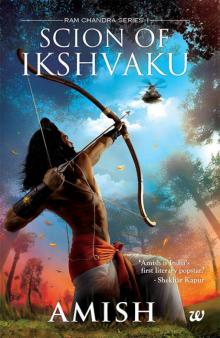 Scion of Ikshvaku
Scion of Ikshvaku The Secret of the Nagas
The Secret of the Nagas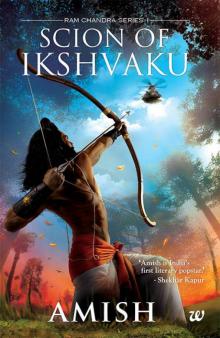 Scion of Ikshvaku (Ram Chandra Series) FlyLeaf.ORG
Scion of Ikshvaku (Ram Chandra Series) FlyLeaf.ORG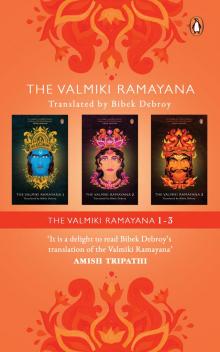 The Valmiki Ramayana
The Valmiki Ramayana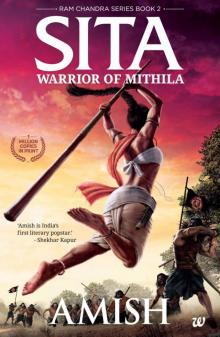 Sita: Warrior of Mithila
Sita: Warrior of Mithila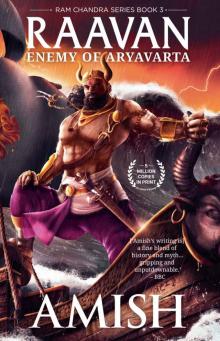 Raavan- Enemy of Aryavarta
Raavan- Enemy of Aryavarta Immortals of Meluha
Immortals of Meluha